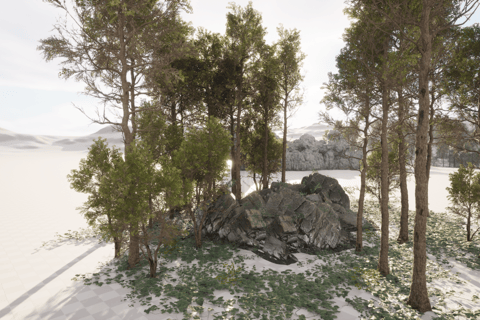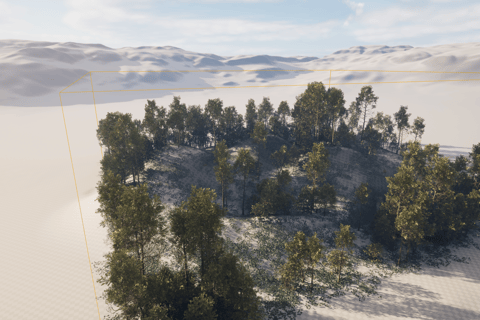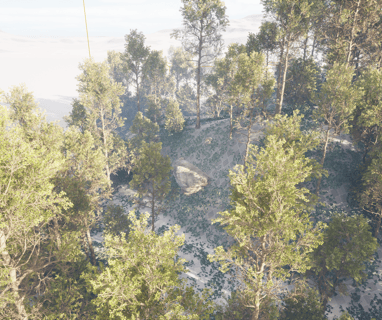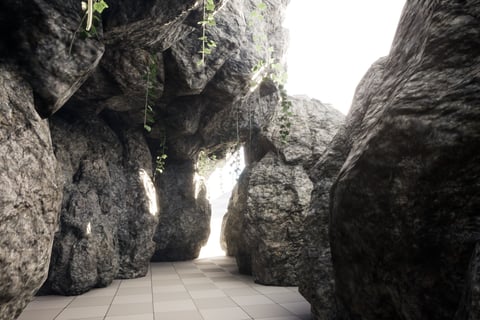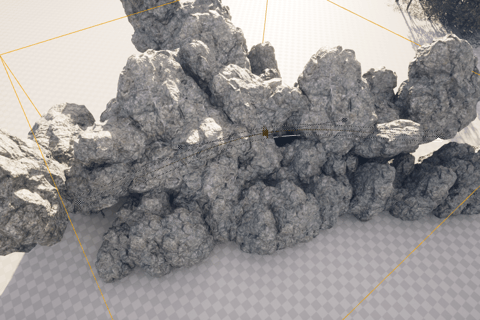PCG Systems Unreal
With the introduction of Unreal 5.2, the realm of procedural content generation (PCG) has opened up exciting possibilities. This emerging system, still relatively unexplored and undocumented, has motivated me to leverage my prior experience with tools like Houdini and other Unreal systems to delve into the creation of more intricate and advanced tools. My primary focus has been on empowering artists to effortlessly design natural-looking environments by developing innovative PCG tools. Looking ahead, I am eager to expand my expertise into the realm of inorganic systems, further pushing the boundaries of what can be achieved through procedural generation.
Blockout To Rock
Placement Stage - Designing gameplay-ready forests can indeed present challenges due to the intricate nature of level design and the specific purposes of each obstacle. Recognizing this, I set out to develop a tool that simplifies the process by enabling level designers and set dressers to seamlessly transform their blockout designs into intricate and realistic rock formations. By automating this process, the tool empowers creators to swiftly enhance the visual appeal and complexity of their environments, ultimately saving valuable time and effort.
Generation Stage - Once the blockout genration is done a forest generation layer can be added that seamlessly integrates with the blockout rock generation. This layer intelligently places trees around the rocks while ensuring there are no intersections, resulting in a natural and harmonious environment. Additionally, a layer of vines or other foliage can be added on top of the rock layer, creating a seamless blend with the surroundings. Through meticulous masking techniques, each element is precisely separated, guaranteeing zero overlaps and optimal utilization of resources. The result is a forest that is constructed with simple shapes placed in editor.
Mountain Terrain
Overview - Using Unreal Engine's terrain system, the PCG system is able to use it as input to extract valuable information. One crucial aspect is determining the slope of the mountains, which serves as a foundation for the asset placement and generation rules. The trees are aligned with natural growth angles rather than following the slope alignment, ensuring a realistic distribution. Additionally, the placement of lower lying foliage follows the slope rule but can spread up steeper inclines. In contrast, the rock layer applies an opposite logic, where larger rocks specifically appear on steep slopes, creating the illusion of a rugged rock face. This meticulous attention to detail ensures an immersive and visually convincing environment throughout the generated landscape.
Cave Generation
Overview - Recognizing the time-consuming nature of creating natural and convincing cave networks, I sought to streamline this process by using Unreal Engine's spline systems alongside the PCG system. The result is a powerful tool that automatically generates intricate cave systems, leveraging the flexibility of splines to drive the layout. This tool significantly expedites the cave creation process, allowing for the quick generation of complex cave structures. Moreover, the tool goes beyond simply creating the cave layout. It incorporates a foliage layer that includes hanging vines and small rocks, enhancing the realism and immersive nature of the caves. The system currently allows for seamless connection points between multiple paths and large rooms to be generated via a closed spline that acts as a volume for this generation.


